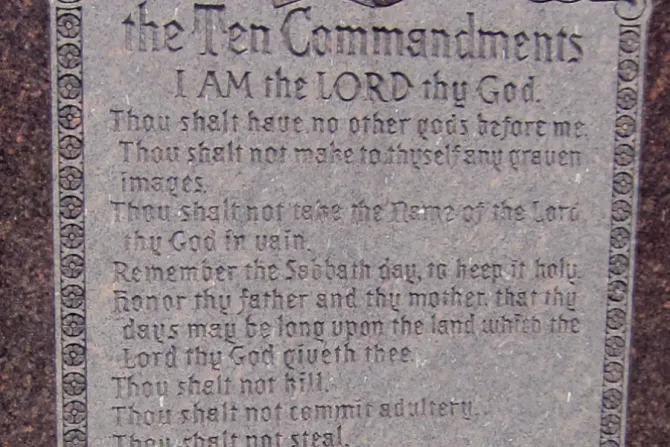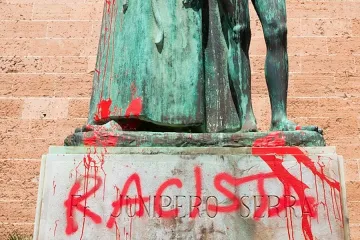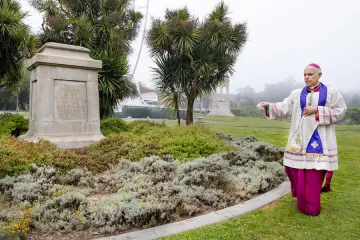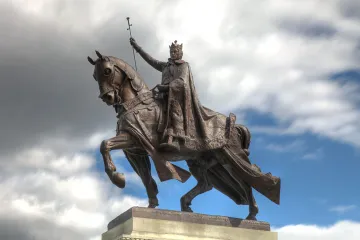CNA Staff, Jun 30, 2020 / 16:19 pm
A man has been arrested for allegedly tearing down a Ten Commandments monument on the grounds of a county courthouse in northwest Montana.
The man, a 30-year-old Columbia Falls resident, allegedly wrapped a chain around the monument at the Flathead County courthouse grounds in Kalispell on June 27. He attached the chain to his truck, then pulled the monument into the street. He removed then chain, got into his truck, and left the area.
The Kalispell Police Department told NBC Montana that observers saw him and called police.
The accused man, Anthony Weimer, faces a felony charge of criminal mischief. Police said they did not know any motive for the action.
Kalispell Police Chief Doug Overman told MTN News he has no affiliation with any protest or demonstration groups in Flathead County.
Local media did not know whether the monument could be restored or if it had to be replaced.
The Ten Commandments monuments, often spread in collaboration with the movie of the same name, have been a tool for building Catholic, Protestant and Jewish unity in America. They have sometimes drawn objections, protests, and legal cases due to perceived violations of constitutional provisions regarding separation of church and state and non-establishment of a religion.
Many public monuments have been the focus of vandalism or have been thrown down in recent weeks.
Largely peaceful protests against police brutality swept the United States after the spread of video showing the death of Minnesotan George Floyd, a black man, during his detention by police.
However, civil unrest, looting, and vandalism have sometimes accompanied or followed these protests. Long-controversial statues of Confederate leaders were toppled in some localities, as were statues of George Washington, Christopher Columbus, and Ulysses S. Grant.
At least two statues of St. Junipero Serra were knocked down by rioters in California.
During the eighteenth century, the saint founded nine Catholic missions in the area that would later become California, many of those missions would go on to become the centers of major California cities. Serra helped to convert thousands of native Californians to Christianity and taught them new agricultural technologies.
Critics have lambasted Serra as a symbol of European colonialism and said the missions engaged in the forced labor of Native Americans, sometimes claiming Serra himself was abusive.
But Serra's defenders say that Serra was actually an advocate for native people and a champion of human rights. They note the many native people he helped during his life, and their outpouring of grief at his death.
Biographers note that Serra frequently intervened for native people when they faced persecution from Spanish authorities. In one case, the priest intervened to spare the lives of several California natives who had attacked a Spanish outpost.
In St. Louis, Missouri the statue of the city's namesake French king St. Louis IX has drawn protests from Muslims, Jews, and others who object to the crusader king. The statue has also drawn hundreds of Catholic defenders who have prayed at the base of the statue.
(Story continues below)
St. Louis was King of France from 1226-70, and he took part in the Seventh and Eighth Crusades. He restricted usury and established hospitals, and personally cared for the poor and for lepers. He was canonized in 1297.





